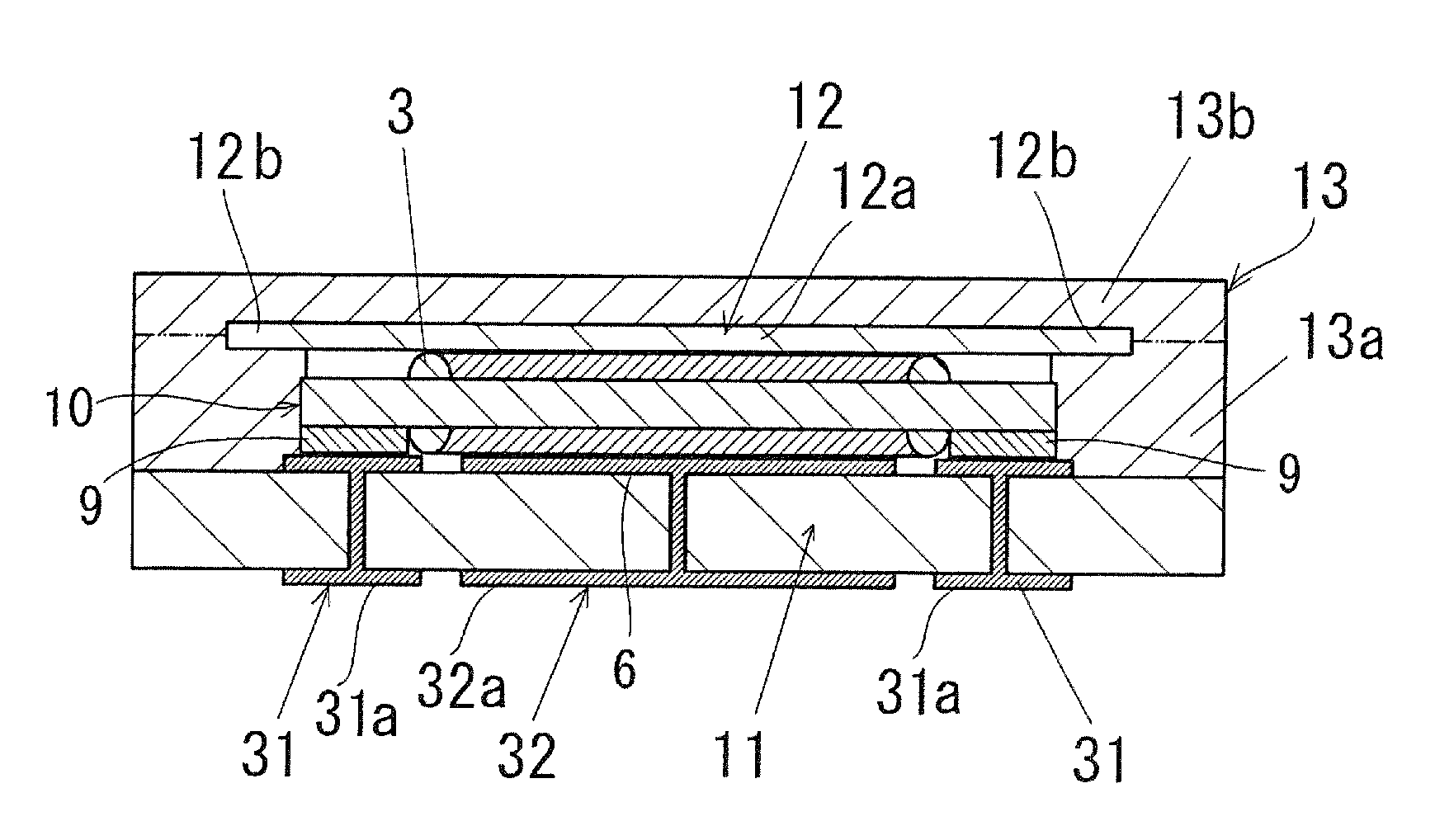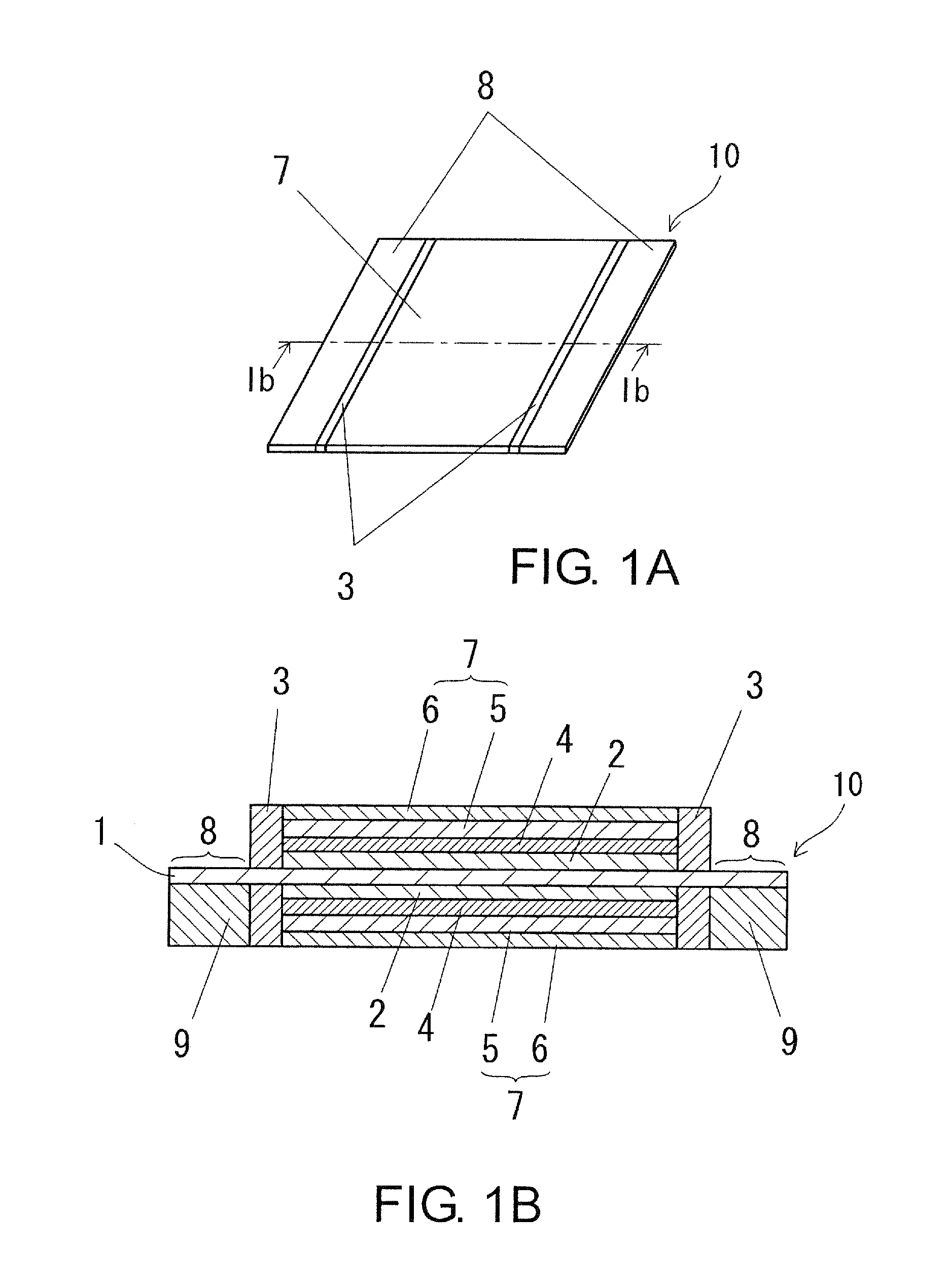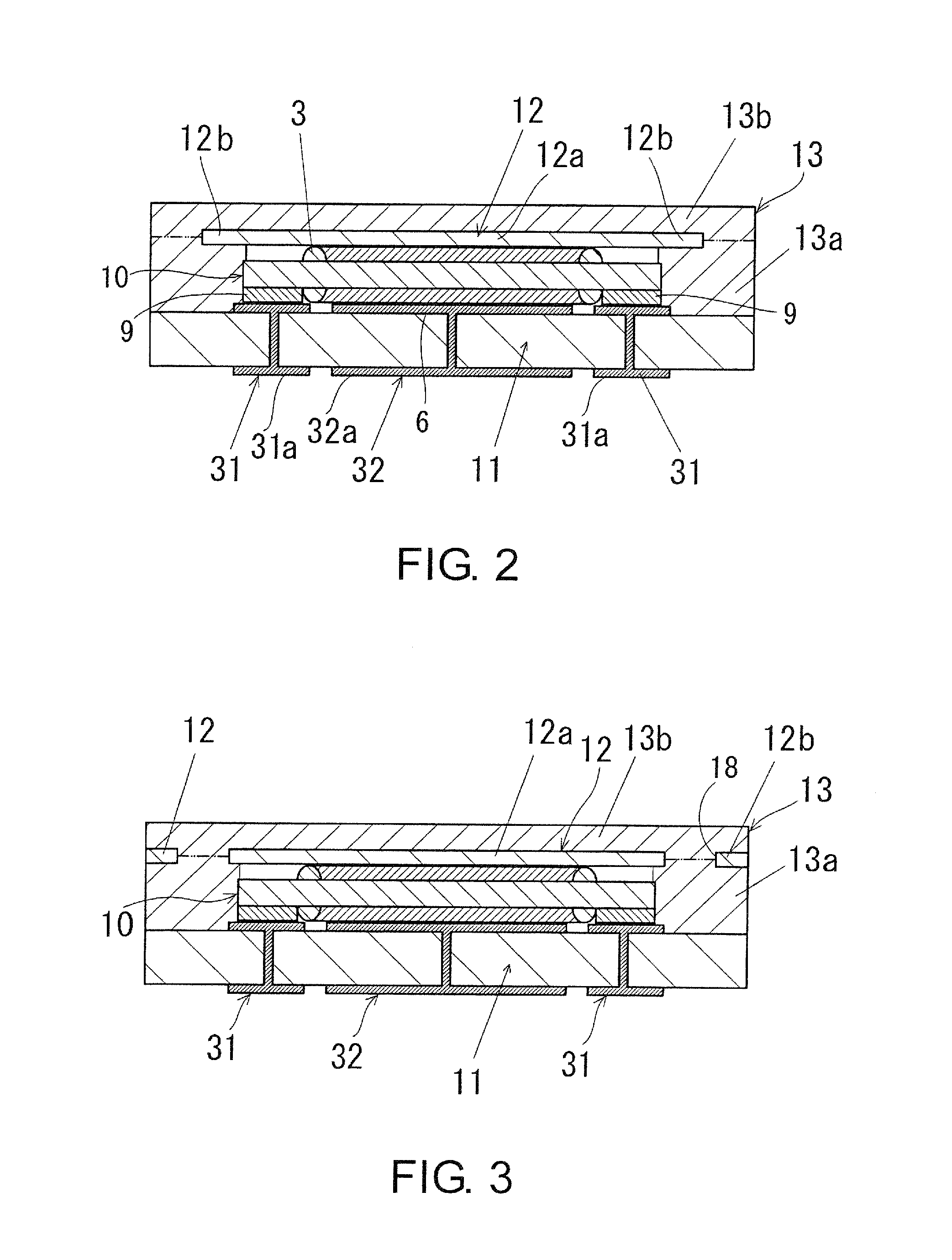Thin solid electrolytic capacitor having high resistance to thermal stress
a solid electrolytic capacitor and high resistance technology, applied in the direction of casings/cabinets/drawers, casings/cabinets/drawers details, electrical equipment, etc., can solve the problem of difficult to achieve the reduction of the thickness of the solid electrolytic capacitor, the difficulty of applying bending to the lead frame, and the difficulty of adapting to the recent thickness reduction. , to achieve the effect of relatively easy thickness reduction
- Summary
- Abstract
- Description
- Claims
- Application Information
AI Technical Summary
Benefits of technology
Problems solved by technology
Method used
Image
Examples
first embodiment
[0025]Referring to FIG. 2, a thin solid electrolytic capacitor according to this invention will be described.
[0026]The thin solid electrolytic capacitor of FIG. 2 includes a mounting substrate 11. A plurality of conductors 31 and 32 are attached to the substrate 11.
[0027]The capacitor element 10 is disposed on the substrate 11. The capacitor element 10 has an upper surface largely extending along the substrate 11 as compared with its height dimension from the substrate 11.
[0028]The thin solid electrolytic capacitor further includes a casing portion 13 at least part of which is made of a resin. The casing portion 13, jointly with the substrate 11, surrounds the capacitor element 10.
[0029]The casing portion 13 comprises a frame 13a disposed around the capacitor element 10 and bonded to the substrate 11, a cover 13b bonded to an upper surface of the frame 13a, and a plate-like non-adhesive member 12 disposed in tight contact with an inner surface of the cover 13b and fixed in the casin...
second embodiment
[0035]Referring to FIGS. 3 and 4A, a thin solid electrolytic capacitor according to this invention will be described. The same or corresponding portions are assigned the same reference symbols, thereby omitting description thereof.
[0036]In the thin solid electrolytic capacitor of FIG. 3, a plate-like non-adhesive member 12 has a number of openings 18 at its second portion 12b. Portions of a frame 13a and / or a cover 13b are inserted into these openings 18. Specifically, portions of a prepreg or an adhesive resin forming the frame 13a and / or the cover 13b enter the openings 18 of the non-adhesive member 12. Consequently, the non-adhesive member 12 is bonded to and substantially integrated with the frame 13a and the cover 13b.
[0037]According to the thin solid electrolytic capacitor of FIG. 3, positioning of the non-adhesive member 12 is easy and thus positional deviation thereof can be prevented, and therefore, it is possible to facilitate position matching of edges or corners of the ...
third embodiment
[0039]Referring to FIG. 5, a thin solid electrolytic capacitor according to this invention will be described. The same or corresponding portions are assigned the same reference symbols, thereby omitting description thereof.
[0040]In the thin solid electrolytic capacitor of FIG. 5, an adhesive 14 is coated on a substrate 11 around the capacitor element 10 bonded thereto under heat and pressure and a non-adhesive member 12 is bonded to the substrate 11 through the adhesive 14, thereby forming a casing portion 13. The fluidity of the adhesive 14 during heating is small.
[0041]Now, a description will be given of a specific method of manufacturing the thin solid electrolytic capacitor of FIG. 5.
[0042]A liquid epoxy resin was coated on the substrate 11 around the capacitor element 10 using a dispenser and, as the non-adhesive member 12, a plate member made of a liquid crystal polymer was placed on the liquid epoxy resin. The plate member was, in advance, surface-treated so as to be capable ...
PUM
 Login to View More
Login to View More Abstract
Description
Claims
Application Information
 Login to View More
Login to View More - R&D
- Intellectual Property
- Life Sciences
- Materials
- Tech Scout
- Unparalleled Data Quality
- Higher Quality Content
- 60% Fewer Hallucinations
Browse by: Latest US Patents, China's latest patents, Technical Efficacy Thesaurus, Application Domain, Technology Topic, Popular Technical Reports.
© 2025 PatSnap. All rights reserved.Legal|Privacy policy|Modern Slavery Act Transparency Statement|Sitemap|About US| Contact US: help@patsnap.com



